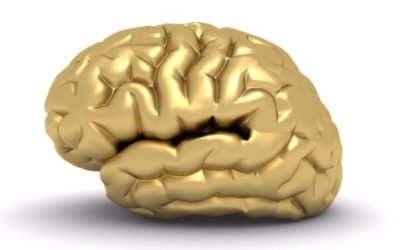Quick Hits
Daily brief research updates from the cognitive sciences

There are multiple mental disorders that can afflict us human beings. And the assumption is that these are complex in nature and there are a multitude of paths to mental illness.
However, there have been a few proposals over the years showing that it may be simpler than we think. I have worked with a model originally proposed by Klaus Grawe and he showed that almost all of well-being could be boiled down to satisfying emotional needs (or not – having needs violated). Others have made promising inroads to identifying a G-Factor – a general factor for mental health.
But this piece of research showed with high accuracy that three factors could predict any mental illness with very high accuracy.
Maisha Iqbal et al. from McGill University in Canada have identified the factors of, what they call, temperament, adversity, and dopamine.
Temperament refers to impulsivity or cognitive control, the ability to control oneself and avoid impulses. Those high on impulsivity we already know have multiple risk factors in life.
Adversity refers to trauma and negative events in life particularly in early years. Again, previous research has shown that the number and severity of early trauma has dramatic impacts on mental health in later life.
Dopamine refers to the dopamine reward pathway in the brain and individual variability in this. Of note is that though dopamine is involved in reward it is also involved in attention and therefore also control – the first point here.
These three combined can predict with 90% accuracy whether somebody has had or currently has a mental disorder. An incredibly high figure. This also points to interventions and how to predict and mitigate these factors. Some of these can be trained and developed.
This is still early days – this research does need to be built on and replicated in larger population groups but nevertheless promising and giving us clear clues as to the underlying mechanisms of mental illness and how to avoid it.

Andy Habermacher
Andy is author of leading brains Review, Neuroleadership, and multiple other books. He has been intensively involved in writing and research into neuroleadership and is considered one of Europe’s leading experts. He is also a well-known public speaker, speaking on the brain and human behaviour.
Andy is also a masters athlete (middle distance running) and competes regularly at international competitions (and holds a few national records in his age category).
Reference
Maisha Iqbal, Sylvia Maria Leonarda Cox, Natalia Jaworska, Maria Tippler, Natalie Castellanos-Ryan, Sophie Parent, Alain Dagher, Frank Vitaro, Mara R. Brendgen, Michel Boivin, Robert O. Pihl, Sylvana M. Côté, Richard E. Tremblay, Jean R. Séguin, Marco Leyton.
A three-factor model of common early onset psychiatric disorders: temperament, adversity, and dopamine.
Neuropsychopharmacology, 2021
DOI: 10.1038/s41386-021-01187-z
More Quick Hits
Why We Share Posts on Social Media
Is it just pictures of cats that we share on social media? That is a cliché – most of social media does not have post of cats on them and all manner of things are shared.
What Makes Human Brains Different?
Those who have followed my writing and articles will know that this is a question that comes up regularly. Just what is different to human brain compared to other species?
Brain Centre For Altruism Identified
Various parts of the brain have been associated with social behaviour but this particularly interesting study looked at effortful decision-making to help others and identified a region that only activates to this.
Genes Or Exercise for Living Longer?
We all know that we should get our exercise. And we all know that this is associated with many positive health outcomes. This includes living longer.
Yay! “Inoculation” Against Misinformation Effective
Wouldn’t it be great in the current world if we could inoculate people against misinformation. Sigh! But that will never happen
Lack Of Sleep Makes Us Selfish
We humans are a social species, we do things in groups, gather in restaurants, bars, music venues, and public spaces together.






